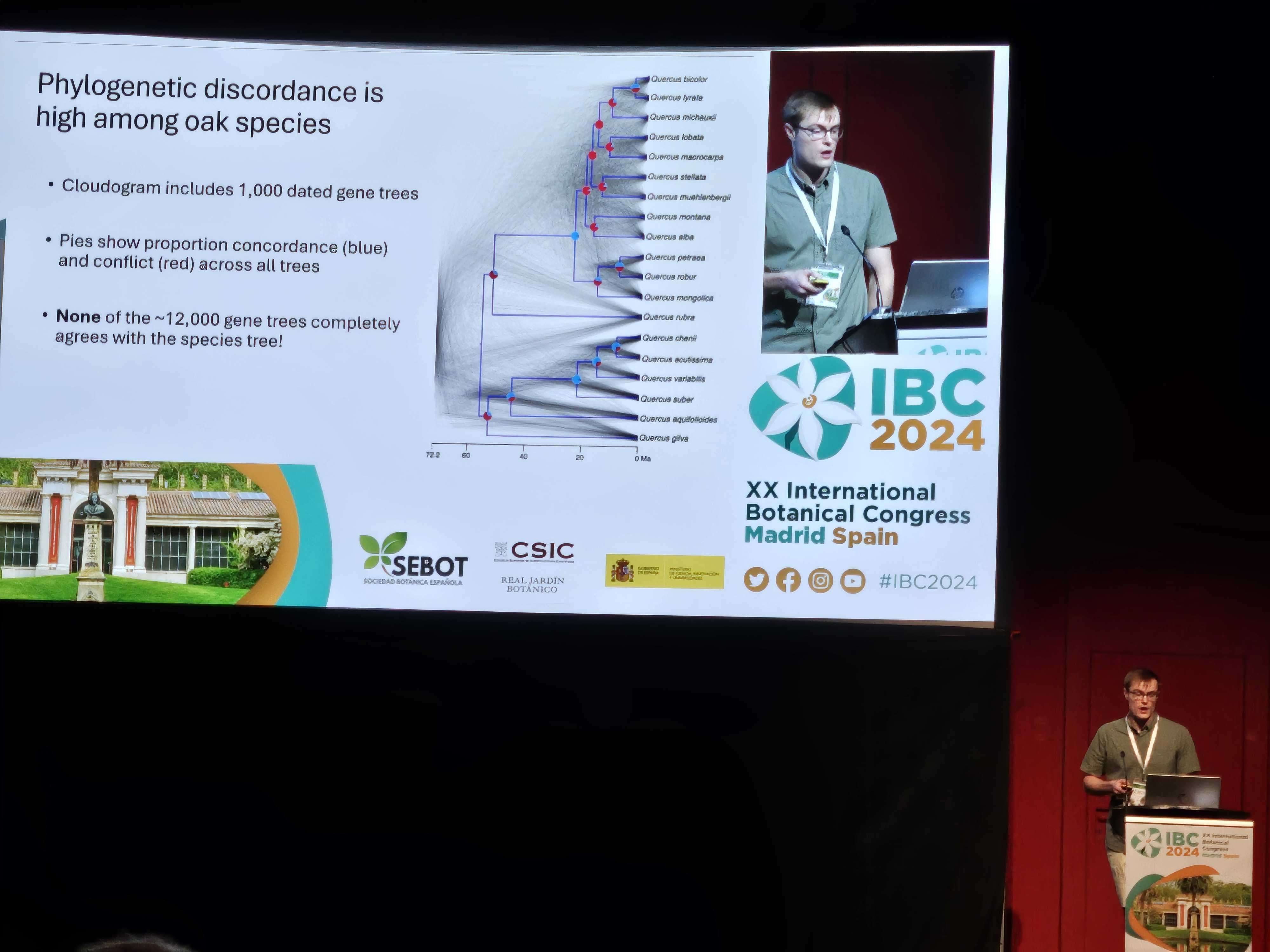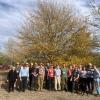Editor's Picks
Plant Focus
Presentation given at the XX International Botanical Conference, Madrid, Spain, July 21–27, 2024.
Authors:
Drew A. Larson1, Margaret Staton2, C. Dana Nelson3, Andrew L. Hipp4, Matthew W. Hahn1
Affiliations:
1. Indiana University, Bloomington, Indiana, USA
2. University of Tennessee, Knoxville, Tennessee, USA
3. USDA Forest Service Southern Research Station, Lexington, Kentucky, USA
4. Morton Arboretum, Lisle, Illinois, USA
Abstract:
Advances in sequencing and analytical technologies have dramatically changed the field of plant phylogenetics and the ever-increasing availability of high-quality reference genomes now offers a particular opportunity to further reveal the evolutionary history of plant clades. We utilized a new haplotype-resolved reference genome for Quercus alba and whole genome resequencing to investigate the history of speciation and introgression in oaks, with a particular focus on North American white oaks. We show that phylogenetic results using a whole genome dataset disagree with previously published relationships among oak species and find widespread phylogenetic conflict across the genome. We further show that a high proportion of polymorphisms are shared across multiple species, which has important implications for time-calibrating the phylogeny of oaks and other species that maintain large population sizes. We investigated introgression among oaks species and identify specific genomic regions showing notable signals of introgression, suggesting that introgression could potentially facilitate adaptive evolution among North American white oak species. As the sequencing and assembly of reference quality genomes becomes ever more routine, whole genome phylogenomic analyses such as these will likely become increasingly relevant and useful to the botanical community.
















